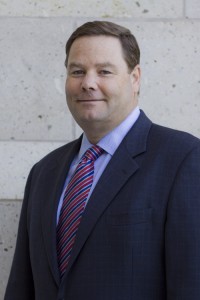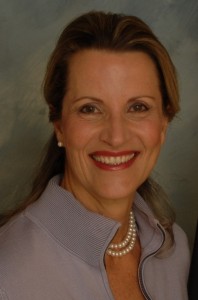Wealth Advisors
In a world of Madoffs and rip-offs, wary (and weary) consumers still need financial advice
By David Raines

Crisis. It’s the mot de choix of just about everyone describing the financial state of the world over the last year, and California has been one of the favorite targets of pity. Dealing with that crisis has virtually supplanted baseball as America’s favorite pastime and the soldiers on the front lines have been the financial advisers who guide their clients through the rough and foamy seas of financial tempests.
How have these wealth advisers fared in dealing with their clients? How have their clients fared? Most are upbeat yet cautious, which seems to be the favorite phrase in dealing with the financial situation, as well.
“I think we did an exceptional job in that only a couple (clients), very few actually, melted down and got out of the market at the wrong time,” says Judy Hagar, CFP of Wolters, Hagar & Pratt, Financial Planning Inc., who also serves as the director of public awareness for the San Diego branch of the Financial Planning Association. “They’re probably still quaking at this point but for the most part we kept them from making the fatal error of selling at rock bottom.”
Indeed, dealing with money shock has been the number one challenge of financial advisers, and one defensive against it is to stay close to clients.
“From an adviser’s standpoint,” says Jim Lingelbach, CFP of MetLife and president of the FPA, “knowing where your clients are is an important factor in determining where they should be with their investments. Overall, the clients that I have, have done quite well because I know where they are in their financial lives, I know what their income needs are or I know what their investment needs are.”
This is particularly important at various times in a client’s life. As Lingelbach reminds us, a person in their 30s or 40s is more in need of a savings portfolio than an income portfolio. As such, clients on the income end of their life may have been the hardest hit.
“If you’re 70 and you’re taking money out and your 401(k) drops… and you lose 40 percent,” says Lingelbach, “that’s devastating. You have a fear of running out of money before your life ends.”
With the real estate market tumbling and foreclosure rates disturbingly high, some homeowners may be tempted to sell while they can. Advisers say this is a bad idea and a bad time.
On the contrary, “it’s probably a good time to buy,” says Gil Armour, CFP of SagePoint Financial Inc. and membership director of the FPA. As market values are depressed from where they were last year, Armour suggests it’s a good time “now or in the next six months to be a buyer.”
That’s not to say that everyone who owns residential real estate is sitting pretty. Different situations warrant different measures. Jon Beyrer, CFP of Blankinship & Foster and president-elect of the FPA, points out that if clients are “in a negative cash flow and they have little to no equity in it, then it really becomes tough to try and stick it out and wait for the property to mature again.”
Still, he cautions against selling too hastily. “If it’s a property that’s not causing hardship with negative income and they can wait five or 10 years, then it might make sense to hold onto it.”
In times of crisis, clients may turn to other temptations that may seem lucrative in the short term, but could prove dangerous if chosen hastily. Asset classes such as gold, for example, could prove enticing as the dollar weakens. But as with most investments, timing is key.
“We’re not advising gold,” says Hagar flatly. “Gold is at an all-time high. Why would we have (clients) buy it at a high?”
Most others agree.
“The problem with it is that it’s been volatile,” says Beyrer. “There’s been such a run-up in price. There was a drop-off a couple of months ago and now it’s running up again. It’s an asset class with a lot of volatility.” Beyrer suggests clients’ portfolios be populated with other asset classes. “Things like oil, energy stocks. Not just gold,” he says.
Still, gold is a valuable commodity and some advisors will help their clients invest in it prudently.
“You have to understand that commodity investing is a strategic play,” cautions Lingelbach. “You hear all these commercials, ‘Take all your money and put it in gold.’ That’s ridiculous. You never want to put all your money in any one given asset class.”
How much should one invest in such a volatile commodity? “Probably not more than five percent at the most,” he suggests.

Hagar agrees that investors should be cautioned against reckless investment. “People come out of the woodwork and advise people to buy gold like crazy,” she says. “They all lost money because it settled back down.”
The most prudent maneuvers for investors today appear to be the international market. Indeed, it seems that such global investing is obligatory.
“Absolutely,” affirms Lingelbach, noting that 67 percent of investment opportunities are outside the United States. “Look at Microsoft. They’re not only a U.S. company but they’re a global company. They’re in China. They’re in India. They’re in all various different countries. If you only invest in U.S. companies, you’re excluding Microsoft. You’re excluding Coca-Cola. You’re excluding all the big companies. You’re excluding Hewlett-Packard, IBM. Do you want to exclude those companies from your portfolio? Probably not.”
Hagar’s company increased their international portfolio last year after realizing most of the financial problems were in the United States. But even the international sector caused some apprehension. As Hagar notes, the international markets took a downturn last fall and in the spring. “That was good and bad,” she notes.
But hope certainly sprang eternal for her clients. Adding developing market funds to their portfolio in March, the fund bounced back. “We hit it really, really well,” Hagar says. “That fund is up 74 percent year-to-date.”
Yet there is still uncertainty on the horizon, and the current push to pass a health-care reform bill in Washington makes it even hazier. With the final bill still yet to be seen, no one is making any clear predictions.
The upshot? Financial advisers are worried about the financial future of their clients. As health care bills and unscrupulous money managers come and go, taking advantage of unwary investors, San Diego’s wealth advisers see the need for some kind of protections.
“It’s a large industrialized nation,” says Hagar. “Not to have so many people uninsured and on welfare rolls or huge medical bills that put them into bankruptcy … I’m a Republican and I still think that’s a crime.”
Lingelbach agrees there needs to be some form of consumer protection. More than health-care reform, he sees financial reform as a necessity. “The last time there was financial reform was 1939,” he says. “Our Financial Planning Association chapter in San Diego has been very proactive in going out and meeting all five congressmen and California senators to discuss with them our view on industry reform. The bottom line: In a world of Madoffs and rip-offs and scams, if you call yourself a financial advisor, you must employ what’s called the fiduciary standard of care, which is to say you must do what’s in the client’s best interest at all times.”
For wealth advisers, caring for their clients, in crisis or in bloom, is key.

